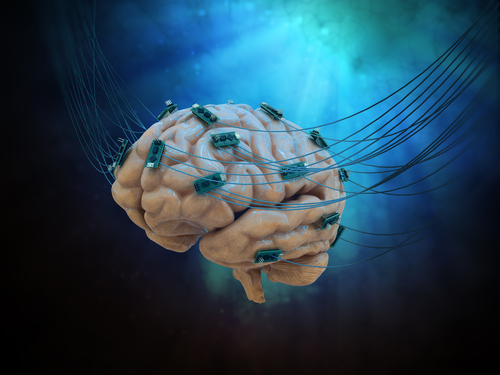
Ineffective stimulation was the primary complaint among people with Parkinson’s disease who use a pacemaker-like device for deep brain stimulation (DBS), according to a 10-year analysis of a federal database that tracks reports of adverse events involving medical devices in the U.S.
Battery-related problems, impedance issues, and infections were also commonly reported.
“As such, accurately capturing the complications associated with DBS therapy for [Parkinson’s disease] is important to help manage expectations for clinicians and their patients, and to encourage further improvement in the procedure’s safety profile,” the researchers wrote.
The analysis, “Complications associated with deep brain stimulation for Parkinson’s disease: a MAUDE study,” was published in the British Journal of Neurosurgery.
First-line therapies for people with Parkinson’s are typically oral medications, including levodopa, which replaces the dopamine that’s missing in patients. This signaling molecule controls movement and balance, both affected by the loss of dopamine-producing nerve cells in the brain.
Over time, most patients experience complications related to medications, such as spontaneous involuntary movements (dyskinesia) and other symptom fluctuations. As the disease progresses, many symptoms, such as balance and gait (walking), swallowing, speech, and cognition, become resistant to these medications.
When this occurs, deep brain stimulation becomes an option. In DBS, a transmitter sends electrical impulses through electrodes implanted in specific brain areas to modify disease-related signaling. The electrodes connect to a battery-powered pulse generator (IPG) implanted below the collarbone.
DBS has been shown to improve tremors, rigidity and stiffness, slowness of movement (bradykinesia), and quality of life. Although DBS is considered safe, inevitably, there will be more complications due to the growing number of implants used. DBS’s most commonly reported adverse events include gait disturbances, cognitive impairment, speech problems, and depression.
However, information on adverse events associated with the DBS device itself is lacking as no large-scale studies have examined patient complaints related to hardware.
In the U.S., manufacturers, importers, and device user facilities are required to file medical device reports related to problems associated with devices, including adverse events. These reports are reviewed and stored in the Manufacturer and User Facility Device Experience (MAUDE) database.
Now, researchers based at the Donald and Barbara Zucker School of Medicine at Hofstra/Northwell in New York accessed the MAUDE database to identity complaints and complications related to DBS in people with Parkinson’s over a 10-year period.
“Here, we assess the prevalence of various reported issues associated with DBS in patients with [Parkinson’s disease] through a systematic analysis of MAUDE reports,” the researchers wrote.
The team accessed 4,189 adverse event reports, which included 4,358 complications. Of these, 2,805 (64%) were patient complaints.
A total of 797 (28%) patient complaints were classified as ineffective stimulation, defined as no relief from symptoms or no longer sufficient. Thus, “it remains important to consider patient self-reports of efficacy as an important metric in patient quality of life outcomes,” the researchers wrote.
Inappropriate painful shocks at the IPG site were reported in 186 (7%) cases and overstimulation in 261 (9%), related to side effects due to stimulation of unwanted targets in the brain.
Battery-related problems, such as running low on power earlier than expected or being unable to recharge, were found in 566 (20%) reports, and there were 41 (1%) complaints of persistent pain at the IPG implant site, so-called pocket-pain.
Complications that were corrected by additional surgery occurred in 1,382 reports. Impedance issues were documented in 757 (55%) cases, in which the resistance to electric current is increased due to various factors such as scar tissue at the electrode site or the accumulation of cerebrospinal fluid, the liquid that surrounds the brain and spinal cord.
“Impedance issues remain a primary challenge to effective stimulation of neural tissues, despite advances in hardware coating and biological dopants,” the researchers wrote.
A total of 104 (8%) situations were related to intraoperative complications, which reflects electrical lead damage, and 78 (6%) reflected episodes of leads moving to an unintended location. There were 99 (7%) reports of lead erosion, 56 (4%) lead disconnections, 180 (13%) lead breaks, and 381 (28%) device infections.
“Infections remain a common and widely reported [surgical] complication, and, in the case of DBS, the risk of hardware infection remains over the course of the device’s lifetime,” the scientists noted.
Documented cases of manufacturer-confirmed device malfunction occurred 82 times, and patient non-compliance was reported in 36 cases, such as not correctly using the device or not charging the battery.
Finally, 53 (1%) patients died, of which device- or procedure-related causes could not be excluded.
“MAUDE requires reporting of even tangentially related deaths,” the researchers said. “We believe this number is more so representative of the comorbidities within the population as opposed to the risk of death from DBS implantation.”
“Overall, DBS has continued to garner positive attention as an increasing number of formerly debilitated [Parkinson’s disease] patients become self-sufficient, offering patients hope for reinstated agency and researchers an exciting opportunity to explore broader applications,” the researchers wrote.
"device" - Google News
June 28, 2021 at 08:28PM
https://ift.tt/3dmhFyB
Ineffectiveness of DBS Device Is Top Complaint From Parkinson's Patients - Parkinson's News Today
"device" - Google News
https://ift.tt/2KSbrrl
https://ift.tt/2YsSbsy
Bagikan Berita Ini















0 Response to "Ineffectiveness of DBS Device Is Top Complaint From Parkinson's Patients - Parkinson's News Today"
Post a Comment